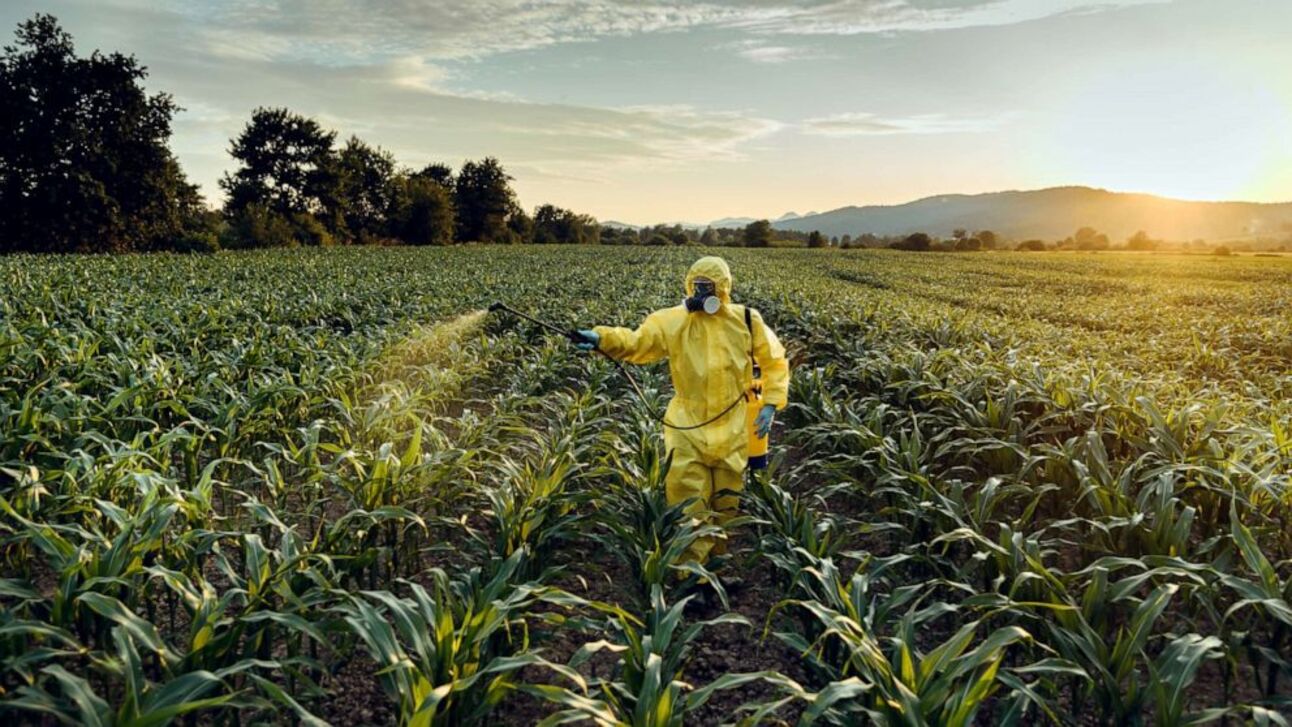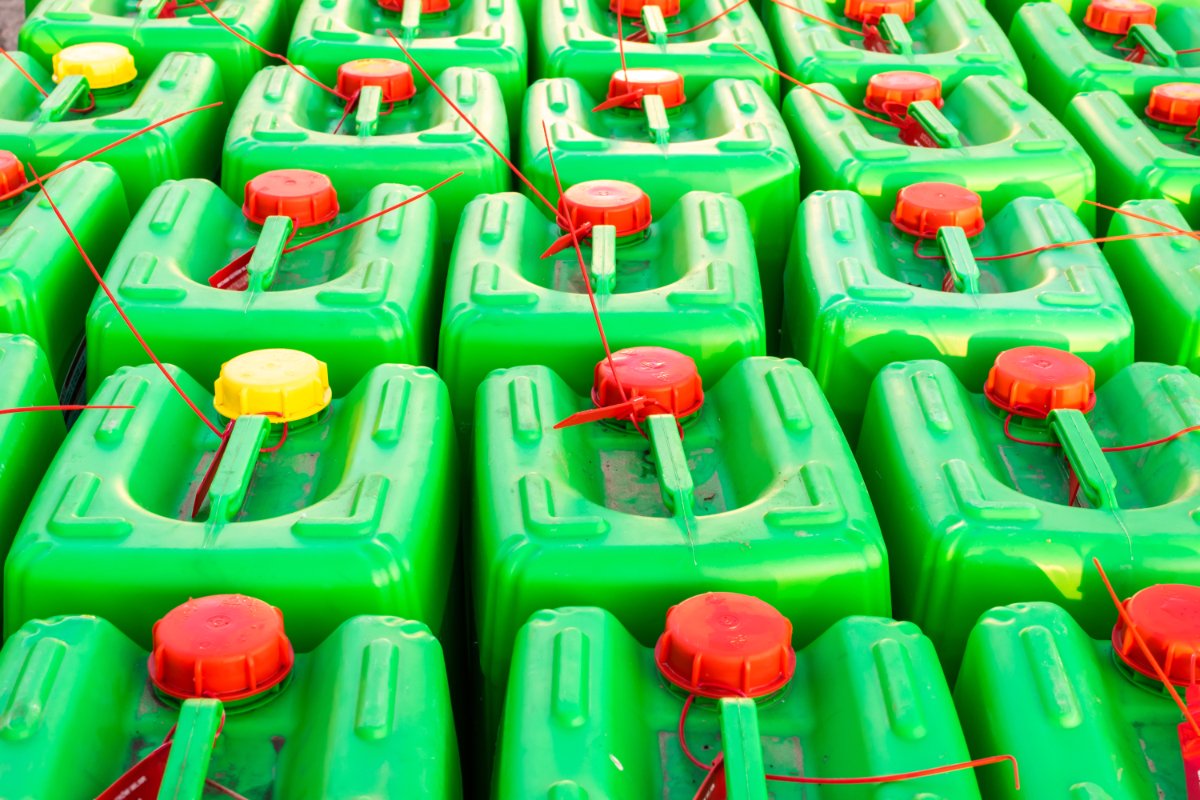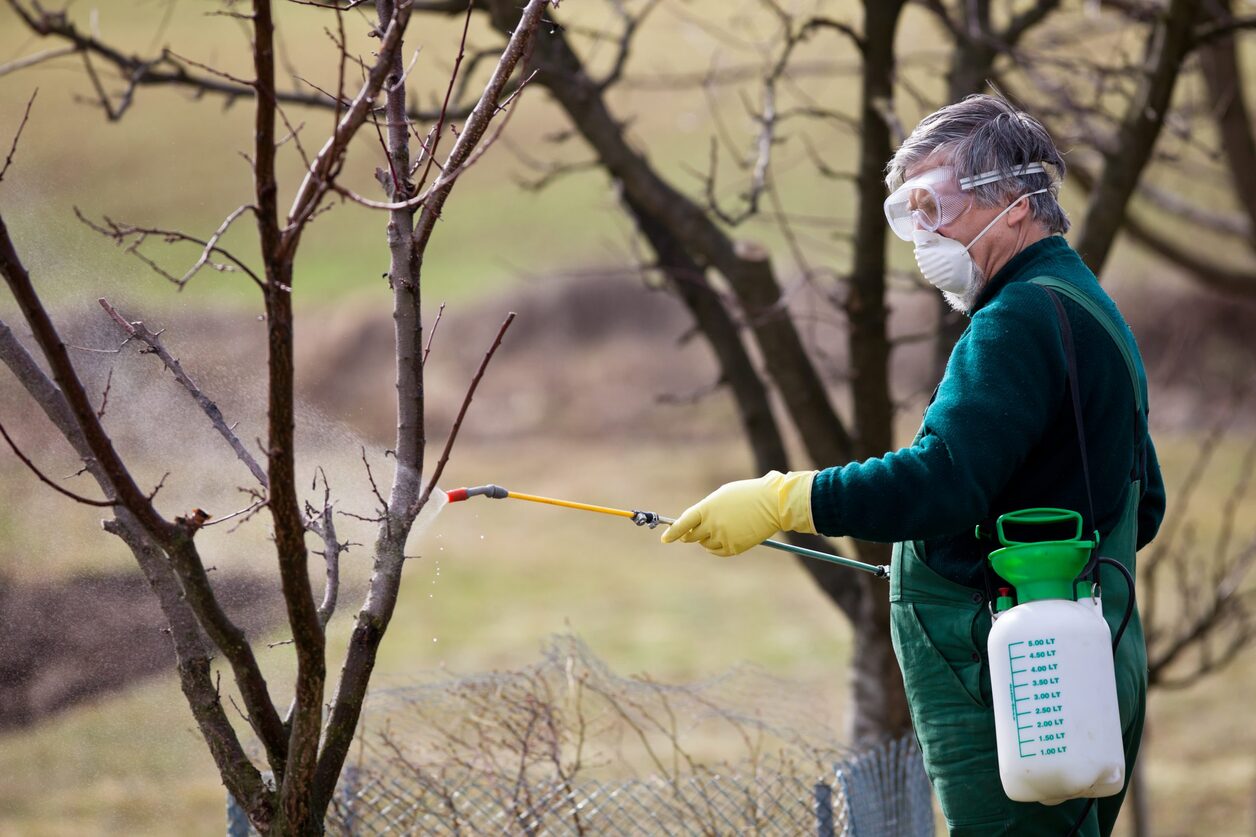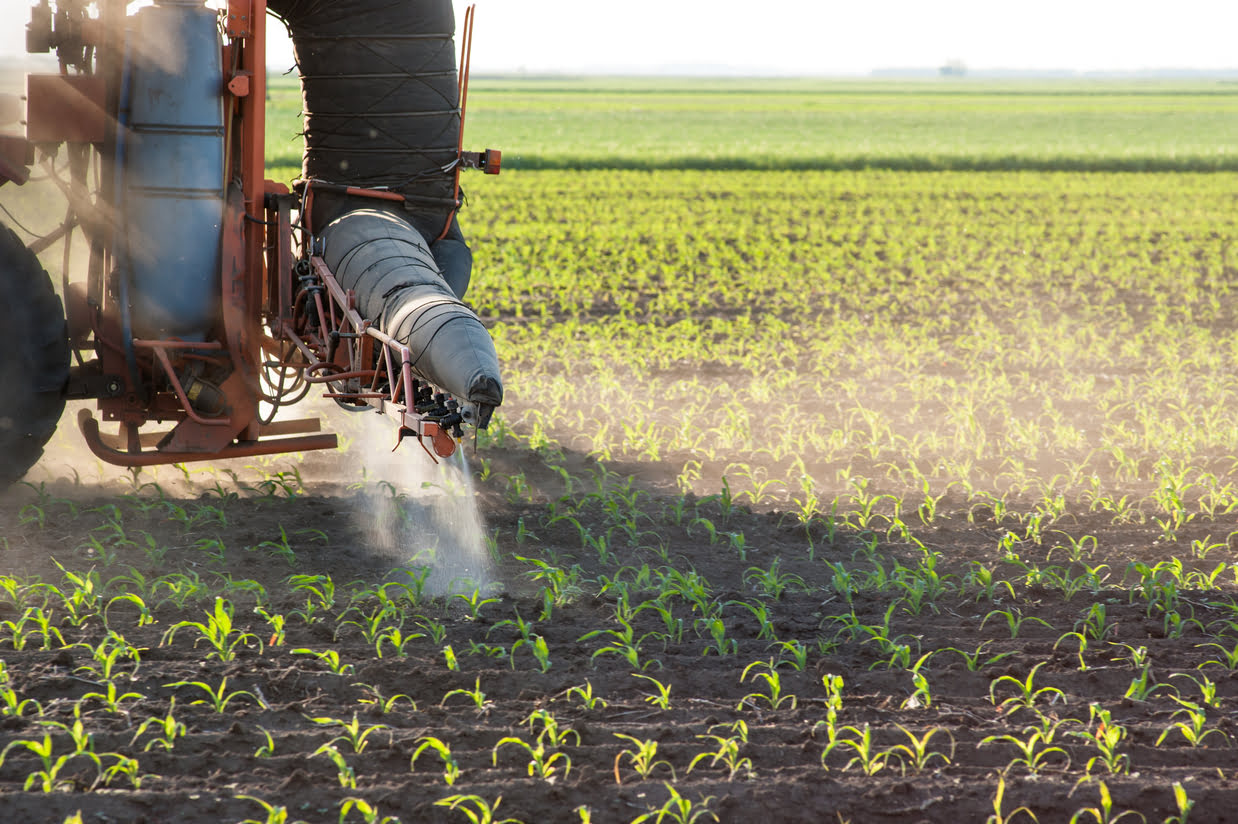Home>Gardening News and Trends>Latest News>What Are The Requirements If Pesticides Are Stored In The Operation


Latest News
What Are The Requirements If Pesticides Are Stored In The Operation
Modified: January 22, 2024
Discover the latest news on the requirements for storing pesticides during operation. Stay informed and ensure compliance with this crucial information.
(Many of the links in this article redirect to a specific reviewed product. Your purchase of these products through affiliate links helps to generate commission for Chicagolandgardening.com, at no extra cost. Learn more)
Table of Contents
Introduction
Welcome to our comprehensive guide on the requirements for storing pesticides in your operations. Pesticides play a crucial role in modern agriculture, helping to protect crops and manage pest populations effectively. However, it’s essential to handle and store these chemicals safely to ensure environmental protection, worker safety, and regulatory compliance.
Regulatory agencies have established specific guidelines and requirements for the storage of pesticides. These rules are in place to minimize the risks associated with improper storage, such as accidental spills, contamination, and unauthorized access. Compliance with these regulations is not only a legal obligation but also a responsible practice for protecting human health and the environment.
In this guide, we will explore the various requirements for storing pesticides in your operations. We’ll cover essential aspects such as storage area requirements, containment and labeling, ventilation and temperature control, security measures, handling and transportation, training and documentation, as well as emergency preparedness. It’s crucial to understand and follow these guidelines to maintain a safe and sustainable operating environment.
Whether you’re a farmer, a pesticide retailer, or a landscaping professional, understanding these requirements will help ensure that your pesticide storage practices are in compliance and aligned with industry best practices. By following these guidelines, you can protect your employees, the environment, and even your business from potential liabilities.
Proper pesticide storage involves not only the physical storage area but also the labeling, handling, and documentation of these substances. It is important to keep up with the latest regulations and industry trends to ensure that your storage practices are up to date.
Now, let’s dive into the specific requirements for storing pesticides in your operations, starting with the storage area requirements.
Regulatory Compliance
When it comes to storing pesticides, regulatory compliance is of utmost importance. It ensures that you adhere to the legal requirements set forth by regulatory agencies that oversee pesticide usage and storage. Compliance with these regulations helps protect the environment, public health, and the safety of your workers. Let’s take a closer look at the key aspects of regulatory compliance for pesticide storage.
1. Understand and follow local regulations: The first step in achieving compliance is to familiarize yourself with the specific pesticide storage regulations in your locality. Different countries and regions may have varying requirements, so it’s essential to consult the appropriate governmental agencies or industry associations to ensure you are up to date with the latest guidelines.
2. Obtain necessary permits or licenses: Depending on your jurisdiction, you may need to acquire permits or licenses to store and handle pesticides. These permits serve as proof that you have met the regulatory requirements and are qualified to undertake these activities. Failure to obtain the required permits can lead to penalties and legal consequences.
3. Ensure proper record-keeping: It is crucial to maintain accurate and updated records of your pesticide storage activities. This includes keeping records of the types and quantities of pesticides stored, as well as their usage and disposal. Having detailed records readily available can help demonstrate your compliance with regulatory requirements during inspections and audits.
4. Stay informed about banned and restricted substances: Regulatory authorities regularly update the list of approved pesticides based on their potential harm to human health and the environment. It’s crucial to stay informed about any prohibited or restricted substances to ensure that you are not storing or using them unlawfully. Check for any updates or notifications from regulatory agencies to ensure you are using only approved pesticides.
5. Regular inspections and audits: Regular inspections and audits conducted by regulatory agencies or independent third parties are a common practice to evaluate compliance with pesticide storage regulations. These inspections may include checking storage conditions, record-keeping, labeling, and training programs. By conducting regular self-assessments, you can identify and address any potential non-compliance issues before an official inspection occurs.
By adhering to regulatory compliance requirements, you can ensure that your pesticide storage practices are in line with legal obligations and best industry practices. Not only does this protect the environment and public health, but it also helps maintain the integrity of your business and its reputation.
Storage Area Requirements
The storage area for pesticides plays a vital role in ensuring the safe and secure containment of these chemicals. It is essential to have a dedicated space specifically designed and constructed for pesticide storage. Let’s explore the key requirements for the storage area:
1. Location and accessibility: The storage area should be located away from residential areas, water sources, and sensitive ecosystems. It should be easily accessible for authorized personnel and emergency responders. Consideration should also be given to the ease of transportation and the proximity to operational areas where pesticides will be used.
2. Construction and materials: The storage area should be constructed using materials that are resistant to the corrosive nature of pesticides, such as non-reactive metals or durable plastics. The flooring should be impermeable to prevent the seepage of liquids. Additionally, the walls should be tight-fitting with no openings or gaps that could allow pests or unauthorized access.
3. Spill containment measures: To prevent accidental spills and leaks, the storage area should have adequate spill containment measures in place. This may include secondary containment systems, such as bunded pallets or spill trays, to capture any potential spills and prevent them from reaching the environment. These containment measures should be regularly inspected and maintained.
4. Shelving and storage organization: Proper organization and shelving of pesticides is vital to minimize the risk of cross-contamination and accidental spills. Pesticides should be stored on shelves or racks designed specifically for chemical storage. Ensure clear separation between different types of pesticides, and follow the manufacturer’s recommendations for proper storage to avoid any chemical reactions.
5. Lighting and ventilation: Adequate lighting and ventilation are crucial for the safe storage of pesticides. Proper lighting helps personnel identify and handle pesticides accurately. Ventilation systems should be in place to ensure the removal of potentially hazardous fumes or vapors that may accumulate in the storage area. These systems should be regularly maintained and inspected for optimal functionality.
6. Temperature control: Certain pesticides may require specific temperature conditions for storage. Ensure that the storage area allows for temperature control, either through natural means or with the help of heating or cooling systems. Improper temperature conditions can compromise the effectiveness of pesticides or even lead to their degradation.
7. Security measures: It is essential to implement appropriate security measures to prevent unauthorized access to the storage area. This may include locked doors, access control systems, surveillance cameras, and restricted access to authorized personnel. Regular monitoring and security audits should be conducted to maintain the integrity and safety of the storage area.
By adhering to these storage area requirements, you can ensure that the pesticides in your operations are stored in a safe and controlled environment. This not only protects the environment and public health but also minimizes the risk of accidents or incidents that could have legal and financial implications.
Containment and Labeling of Pesticides
Proper containment and clear labeling of pesticides are essential for maintaining safety and ensuring proper handling of these substances. Effective containment prevents accidental spills and leaks, while clear labeling provides critical information to users. Let’s delve into the requirements for containment and labeling of pesticides:
1. Proper containers: Pesticides should be stored in containers specifically designed for their safe storage, such as approved pesticide storage tanks or containers. These containers should be made of materials compatible with the pesticide being stored and should have secure closures to prevent any leakage or access by unauthorized individuals.
2. Secondary containment systems: In addition to primary storage containers, secondary containment systems should be in place to provide an extra layer of protection against spills or leaks. This may include spill trays, bunded pallets, or containment sumps. These systems help prevent the escape of pesticides in case of container failure.
3. Labeling requirements: All pesticide containers must be properly labeled with clear and accurate information. The labels should include the product name, active ingredients, signal words (such as “Danger” or “Caution”), instructions for use, precautionary statements, and the EPA registration number. Labels should also include hazard symbols, such as skull and crossbones, to indicate potential dangers to users.
4. Warning signs and placards: The storage area should be clearly marked with warning signs and placards to indicate the presence of pesticides and the associated hazards. These signs should be easily visible and legible, serving as a reminder to anyone entering the area to exercise caution and follow proper safety protocols.
5. Separation and segregation: Different types of pesticides should be properly separated and segregated within the storage area. This helps prevent cross-contamination and accidental mixing, which can result in hazardous chemical reactions. Follow the manufacturer’s recommendations for storage and keep incompatible pesticides well-separated.
6. First aid and spill kits: Adequate supplies of first aid kits and spill response kits should be readily available near the pesticide storage area. These kits should include materials for handling minor injuries and spills, such as protective gloves, absorbent materials, neutralizing agents, and proper disposal containers. Regular inspections and restocking of these kits are essential to ensure their readiness in case of emergencies.
7. Inspection and maintenance: Regular inspections of the containment systems, labels, and overall storage area should be conducted to identify any signs of deterioration, leakage, or damage. Any issues identified should be promptly addressed through repairs or replacements. Proper maintenance ensures the continued effectiveness of containment measures and reduces the risk of accidents or environmental contamination.
By properly containing pesticides and ensuring clear labeling, you can minimize the risk of accidents, enhance safety during handling and storage, and provide essential information to users. These practices contribute to the overall safety and compliance of your operations and promote responsible pesticide management.
Ventilation and Temperature Control
Adequate ventilation and temperature control are critical factors in maintaining the integrity and safety of pesticide storage areas. Proper ventilation helps to remove potentially harmful fumes or vapors, while temperature control ensures the stability and effectiveness of the stored pesticides. Let’s delve into the requirements for ventilation and temperature control:
1. Ventilation systems: The storage area should be equipped with a well-designed ventilation system that promotes air circulation and the removal of potentially hazardous substances. This system should be capable of exchanging the air within the storage area regularly. The ventilation system should be properly maintained and inspected to ensure its proper functioning. Regular monitoring of airflow and ventilation rates is essential to maintain a safe and comfortable environment.
2. Natural ventilation: In cases where natural ventilation is feasible, such as for outdoor pesticide storage areas, ensure that the area is well-ventilated to prevent the buildup of fumes or vapors. The storage area should have openings and vents strategically placed to allow for the natural flow of air. It’s important to consider factors such as wind patterns and proximity to sensitive areas when determining the optimal placement of vents.
3. Temperature control: Some pesticides require specific temperature conditions to maintain their stability and efficacy. It’s crucial to store pesticides within the temperature range recommended by the manufacturer. Improper temperatures can lead to degradation or reduced effectiveness of the pesticides. Depending on the storage area’s location and climate, additional temperature control measures may be necessary, such as heating or cooling systems to maintain the required temperature range.
4. Monitoring equipment: Installing monitoring equipment, such as temperature gauges and humidity sensors, is advisable for larger storage areas and facilities. These devices help in real-time monitoring of temperature and humidity levels, ensuring that the storage conditions are maintained within the recommended range. Any deviations from the optimal range should be addressed promptly to avoid compromising the quality and effectiveness of the pesticides.
5. Regular inspections: Regular inspections of the ventilation system and temperature control equipment should be conducted to detect any signs of malfunction or damage. These inspections should include checking for blocked vents, malfunctioning fans, or inaccurate temperature readings. Any issues identified during inspections should be resolved promptly to maintain the desired storage conditions.
6. Emergency ventilation: Emergency ventilation systems should be in place to address situations where hazardous fumes, spills, or leaks occur. These systems should be capable of quickly removing toxic gases or fumes from the storage area to protect the safety of personnel and prevent the buildup of harmful substances.
Proper ventilation and temperature control are crucial to ensure the safety and effectiveness of pesticide storage areas. By adhering to these requirements, you can minimize the risk of exposure to harmful substances, maintain the integrity of the stored pesticides, and provide a safe working environment for your employees.
Security Measures
Implementing appropriate security measures for pesticide storage is essential to prevent unauthorized access, safeguard against theft or misuse, and protect the surrounding environment and personnel. By taking proactive steps to enhance security, you can ensure the integrity and safety of your pesticide storage area. Let’s explore some key security measures:
1. Restricted access: The pesticide storage area should be accessible only to authorized personnel. Implement measures such as locked gates or fences, and establish clear protocols for granting access. Restricting access helps prevent unauthorized individuals from entering or tampering with the storage area.
2. Security cameras: Installing surveillance cameras in and around the storage area can serve as a deterrent to potential intruders and provide evidence in case of an incident. Place cameras strategically to capture key vantage points, entrances, and exits. Ensure that the cameras are operational and regularly monitored to maintain their effectiveness.
3. Lighting: Adequate lighting is crucial for maintaining visibility and deterring unauthorized access. Install bright and well-positioned lighting around the storage area. Motion sensor lights can be an effective security measure, as they activate when someone approaches, alerting potential intruders and making it easier for surveillance cameras to capture clear footage.
4. Intrusion detection systems: Consider implementing intrusion detection systems, such as alarms or motion sensors, to alert you of any unauthorized entry or unusual activity in the storage area. These systems can be connected to a centralized security station, allowing for immediate response in case of an intrusion or emergency.
5. Secure storage containers: Ensure that the containers used for storing pesticides are secure and have proper locking mechanisms. Use padlocks or combination locks that are difficult to bypass or tamper with. Regularly inspect the locks and replace them if they show signs of weakness or wear.
6. Employee training: Security measures are only effective if employees are trained in proper security protocols and aware of the potential risks. Establish procedures for key control, reporting suspicious activity, and responding to security breaches. Conduct regular security training sessions to ensure that employees are up to date on security best practices.
7. Regular security assessments: Conduct regular security assessments to identify any vulnerabilities or areas for improvement. This may involve hiring a professional security consultant to evaluate your current security measures and make recommendations based on industry standards and best practices.
8. Emergency response plan: Develop an emergency response plan specific to the storage area. This plan should outline procedures for handling security breaches, accidents, or any other incidents that may occur. Appoint individuals responsible for responding to emergencies, and ensure that employees are familiar with the plan and their respective roles.
By implementing these security measures, you can enhance the safety and integrity of your pesticide storage area. Protecting pesticides from theft, vandalism, and unauthorized access not only safeguards your business but also prevents potential harm to individuals and the environment.
Handling and Transportation of Pesticides
Proper handling and transportation of pesticides are crucial to maintain the safety of personnel, prevent spills or leaks, and minimize the risk of environmental contamination. Adhering to best practices ensures that pesticides are effectively managed throughout their lifecycle. Let’s explore the key considerations for the handling and transportation of pesticides:
1. Training and education: Prioritize training and education for personnel involved in the handling and transportation of pesticides. Ensure that they are well-informed about the potential hazards, proper handling techniques, and emergency response protocols. Regularly update training programs to keep employees informed about new regulations and industry best practices.
2. Personal protective equipment (PPE): Personnel must wear appropriate PPE when handling pesticides to minimize exposure and prevent contamination. This may include gloves, goggles, respiratory masks, and protective clothing. Make sure that PPE is provided, regularly inspected, and replaced as needed.
3. Proper packaging and labeling: Pesticides should be stored and transported in their original containers, or in containers specifically designed for pesticide transportation. Ensure that containers are securely closed and properly labeled as per regulatory requirements. Labels should be easily readable, intact, and include information such as product name, active ingredients, and hazard warnings.
4. Compatibility and segregation: When transporting pesticides, it is important to consider compatibility to prevent chemical reactions. Separate incompatible pesticides and follow the manufacturer’s recommendations for storage and transportation. Use dividers, trays, or racks to prevent contact and cross-contamination between different pesticides.
5. Securing and stabilizing containers: Securely fasten containers during transportation to prevent spillage or breakage. Use appropriate restraints, such as straps or tie-downs, to ensure that containers are stable and prevent movement that can lead to damage or leakage. Regularly inspect these restraints to ensure their effectiveness.
6. Transport vehicles: Select vehicles suitable for pesticide transportation and equipped with necessary safety features. Ensure that vehicles are clean and designated solely for transporting pesticides to prevent contamination. Routinely inspect and maintain vehicles to ensure that they meet safety standards and regulations.
7. Emergency response preparedness: Develop an emergency response plan specifically for pesticide transportation incidents. This plan should include procedures for addressing spills, leaks, accidents, and other emergencies during transportation. Train personnel on these procedures and ensure that necessary spill response equipment, such as absorbent materials and containment measures, are available in transport vehicles.
8. Regulatory compliance: Familiarize yourself with the local and national regulations governing the transportation of pesticides. Ensure that you have obtained any required permits or licenses and comply with specific guidelines for transport, storage, and documentation. Stay up to date with regulatory changes to ensure ongoing compliance.
By following proper handling and transportation practices, you can reduce the risks associated with pesticide handling, protect the environment, and safeguard the health and safety of personnel involved. These practices contribute to responsible pesticide management and help maintain industry standards for safety and efficiency.
Training and Documentation
Proper training and documentation are essential elements in ensuring the safe handling, storage, and use of pesticides. Comprehensive training programs and thorough documentation help to educate personnel, maintain compliance with regulations, and promote a culture of safety within your operations. Let’s explore the importance of training and documentation when dealing with pesticides:
1. Employee training: Establish a comprehensive training program that covers all aspects of pesticide handling, storage, and use. Train employees on topics such as proper handling techniques, understanding pesticide labels, personal protective equipment (PPE) usage, emergency response procedures, and proper disposal methods. Regularly update training programs to reflect changes in regulations or industry best practices.
2. Hazard communication: Training should emphasize the importance of understanding and communicating pesticide hazards. Proper communication ensures that employees are aware of potential risks associated with specific pesticides, allowing them to take necessary precautions and respond appropriately in case of an emergency.
3. Recordkeeping: Maintain accurate and up-to-date records of training sessions, including attendance, topics covered, and assessments. These records serve as evidence of compliance and can be referred to in the event of an audit or inspection. Regularly review and update training records to ensure that employees undergo refresher courses as necessary.
4. Standard operating procedures (SOPs): Develop and document clear standard operating procedures for all pesticide-related activities, including storage, handling, and disposal. SOPs provide guidance and promote consistency in operations, ensuring that all employees follow established procedures consistently.
5. Material safety data sheets (MSDS): Acquire and maintain MSDS for all stored pesticides. MSDS contain detailed information about the chemical properties, health hazards, handling precautions, and emergency response procedures for each pesticide product. Make these sheets readily accessible to employees, ensuring they understand and utilize the information to minimize risks.
6. Inspections and audits: Conduct regular inspections and audits to ensure that employees are following proper procedures and complying with regulations. These inspections may include reviewing documentation, checking PPE usage, and assessing overall compliance with established protocols. Address any deficiencies or non-compliance issues promptly to mitigate risks.
7. Continuing education: Encourage employees to pursue continuous education and stay updated on industry advancements, new regulations, and emerging safety practices. Provide opportunities for professional development, such as attending seminars or workshops related to pesticide management, safety, and environmental stewardship.
8. Documentation of incidents and near-misses: Encourage employees to report any incidents or near-miss situations regarding pesticide handling. Documenting these incidents helps identify root causes, implement corrective actions, and prevent future occurrences. Maintain a system for reporting and investigating incidents, ensuring that employees feel comfortable reporting without fear of reprisals.
By providing comprehensive training and maintaining proper documentation, you establish a culture of safety, compliance, and continuous improvement. These practices not only protect the well-being of employees but also serve as evidence of your commitment to responsible pesticide management.
Emergency Preparedness
Being prepared for emergencies is essential when dealing with pesticides, as it helps mitigate risks and minimize potential damage to personnel, the environment, and surrounding communities. Developing and implementing an effective emergency preparedness plan ensures a swift and coordinated response in case of accidents, spills, or other unforeseen incidents involving pesticides. Let’s explore the key aspects of emergency preparedness:
1. Hazard identification and assessment: Conduct a thorough assessment of the hazards associated with the pesticides stored and used in your operations. Identify potential risks, including toxicity levels, flammability, and reactivity of the chemicals. This assessment serves as the foundation for your emergency preparedness plan.
2. Emergency response plan: Develop a comprehensive emergency response plan specific to pesticide-related incidents. This plan should include procedures for evacuations, communication channels, roles and responsibilities of personnel, and coordination with emergency services. Regularly review and update the plan to reflect any changes in operations, personnel, or regulations.
3. Communication systems: Establish effective communication systems for both internal and external communication during emergencies. Ensure that employees are familiar with the communication protocols and have access to reliable methods of communication, such as two-way radios or dedicated emergency phone lines. Maintain contact information for emergency responders and regulatory agencies to facilitate swift communication and cooperation.
4. Emergency equipment and supplies: Provide and maintain necessary emergency response equipment and supplies in accessible locations. This may include spill response kits, personal protective equipment (PPE), fire extinguishers, and first aid supplies. Regularly inspect and replenish these items to ensure they are ready for use during emergencies.
5. Training and drills: Conduct regular training sessions and emergency drills to familiarize employees with the emergency response plan. These drills help assess the effectiveness of the plan, identify areas for improvement, and ensure that employees are confident and prepared to respond appropriately in real emergencies.
6. Spill containment and cleanup: Implement spill containment measures and have appropriate procedures in place to respond to spills or leaks. Ensure that employees are trained on proper spill response techniques, including containment, cleanup, and disposal of spilled materials. Establish relationships with professional environmental cleanup services to ensure prompt and effective response to larger incidents.
7. Evacuation procedures: Outline clear evacuation procedures based on the specific risks associated with each type of pesticide. Establish designated assembly locations where employees should gather after evacuating the facility. Regularly practice and review evacuation procedures to ensure employees understand and can execute them swiftly and safely.
8. Post-incident assessment and lessons learned: After an emergency or incident involving pesticides, conduct a thorough post-incident assessment to identify any shortcomings in the response and areas for improvement. Use this assessment to update the emergency response plan and modify procedures accordingly. Share lessons learned with employees to enhance their preparedness and prevent similar incidents in the future.
By having a well-developed emergency preparedness plan and regularly training and drilling employees, you can effectively respond to emergencies, protect personnel, and minimize the environmental impact of pesticide incidents. Being prepared increases your ability to mitigate risks and ensures a safer operating environment for all.
Conclusion
Proper storage, handling, and transportation of pesticides are essential for ensuring the safety of personnel, protecting the environment, and maintaining regulatory compliance. By adhering to the requirements outlined in this guide, you can create a secure and controlled environment for pesticide storage and usage within your operations.
Regulatory compliance serves as the foundation for responsible pesticide management. Understanding and following local regulations and obtaining necessary permits or licenses are critical steps in maintaining compliance. Regular inspections and audits, recordkeeping, and staying informed about banned or restricted substances help ensure that your operations align with legal requirements.
The storage area plays a vital role in maintaining the integrity and safety of pesticides. Proper construction, spill containment measures, appropriate shelving and storage organization, as well as ventilation and temperature control, are crucial aspects of storage area requirements. Implementing these measures safeguards against accidental spills, cross-contamination, and degradation of pesticides.
Containment and labeling of pesticides are essential for proper handling and identification. Using appropriate containers, implementing secondary containment systems, clearly labeling pesticides, and ensuring proper segregation help prevent spills, minimize risks, and provide critical information to users.
Ventilation and temperature control in the storage area contribute to maintaining the effectiveness and stability of pesticides. Proper ventilation systems and temperature control mechanisms prevent the accumulation of fumes or vapors and safeguard the integrity of stored pesticides.
Security measures are important to protect against unauthorized access, theft, and misuse of pesticides. Restricted access, surveillance cameras, proper lighting, and secure storage containers are key components of an effective security program.
Employee training and documentation are vital for fostering a culture of safety and compliance. Proper training ensures that personnel are knowledgeable about pesticide hazards, handling techniques, and emergency response protocols. Accurate documentation of training sessions, standard operating procedures (SOPs), and incident reports provide evidence of compliance and serve as valuable resources for ongoing improvement.
Lastly, having an emergency preparedness plan in place prepares your organization to effectively respond to accidents, spills, or other incidents involving pesticides. Conducting hazard assessments, establishing communication systems, regular training, and drills, as well as maintaining appropriate emergency equipment and supplies, enhance your ability to mitigate risks and protect personnel and the environment.
By implementing the guidelines and best practices outlined in this guide, you can ensure responsible pesticide storage, handling, and transportation, contributing to the overall safety and sustainability of your operations. Maintain compliance with regulations, prioritize employee training, and continually assess and improve your processes to mitigate risks and maintain a safe operating environment.










